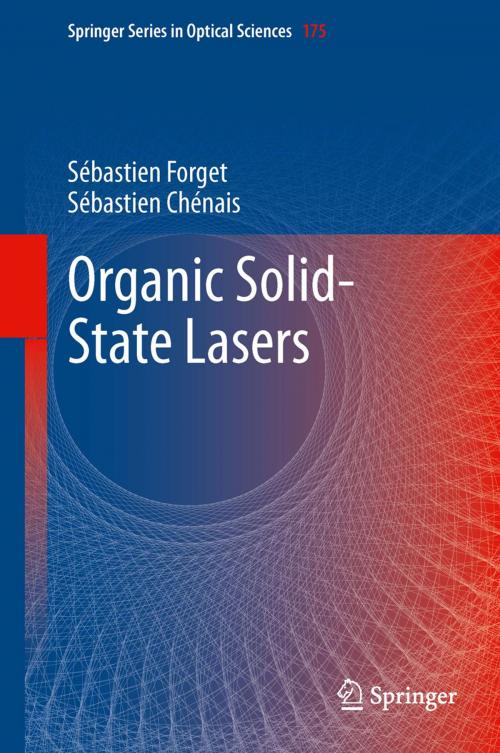| Author: | Sébastien Forget, Sébastien Chénais | ISBN: | 9783642367052 |
| Publisher: | Springer Berlin Heidelberg | Publication: | July 3, 2013 |
| Imprint: | Springer | Language: | English |
| Author: | Sébastien Forget, Sébastien Chénais |
| ISBN: | 9783642367052 |
| Publisher: | Springer Berlin Heidelberg |
| Publication: | July 3, 2013 |
| Imprint: | Springer |
| Language: | English |
Organic lasers are broadly tunable coherent sources, potentially compact, convenient and manufactured at low-costs. Appeared in the mid 60’s as solid-state alternatives for liquid dye lasers, they recently gained a new dimension after the demonstration of organic semiconductor lasers in the 90's. More recently, new perspectives appeared at the nanoscale, with organic polariton and surface plasmon lasers. After a brief reminder to laser physics, a first chapter exposes what makes organic solid-state organic lasers specific. The laser architectures used in organic lasers are then reviewed, with a state-of-the-art review of the performances of devices with regard to output power, threshold, lifetime, beam quality etc. A survey of the recent trends in the field is given, highlighting the latest developments with a special focus on the challenges remaining for achieving direct electrical pumping of organic semiconductor lasers. A last chapter covers the applications of organic solid-state lasers.
Organic lasers are broadly tunable coherent sources, potentially compact, convenient and manufactured at low-costs. Appeared in the mid 60’s as solid-state alternatives for liquid dye lasers, they recently gained a new dimension after the demonstration of organic semiconductor lasers in the 90's. More recently, new perspectives appeared at the nanoscale, with organic polariton and surface plasmon lasers. After a brief reminder to laser physics, a first chapter exposes what makes organic solid-state organic lasers specific. The laser architectures used in organic lasers are then reviewed, with a state-of-the-art review of the performances of devices with regard to output power, threshold, lifetime, beam quality etc. A survey of the recent trends in the field is given, highlighting the latest developments with a special focus on the challenges remaining for achieving direct electrical pumping of organic semiconductor lasers. A last chapter covers the applications of organic solid-state lasers.















